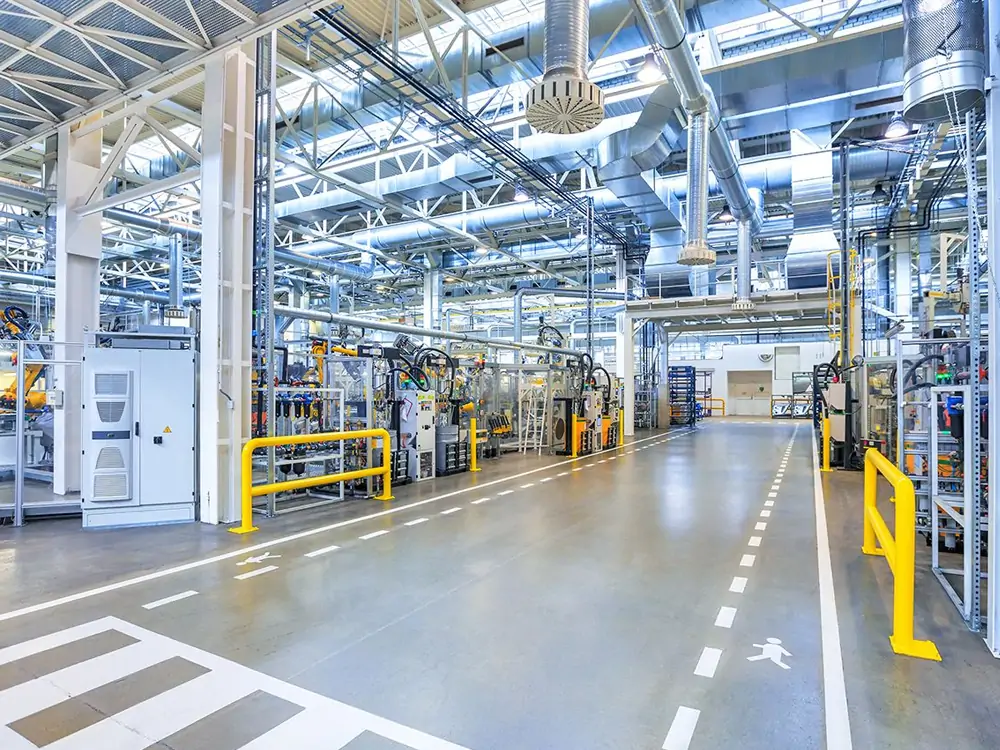Core Advantages

Efficient Pollutant Removal:
- The tower effectively removes harmful gases, particulates, and pollutants from industrial exhaust using a spray adsorption process, where scrubbing liquid captures and neutralizes contaminants, ensuring high air purification efficiency.
Corrosion Resistance and Durability:
- Built with PP (polypropylene) or stainless steel materials, the tower offers strong resistance to chemical corrosion and high durability, making it suitable for harsh industrial environments while ensuring a long operational lifespan with minimal maintenance.

High Pollutant Removal Efficiency

Corrosion Resistance

Durability and Longevity

Low Energy Consumption

Adaptability and Customization

Low Maintenance Requirements

High Pollutant Removal Efficiency
- The tower uses a spray adsorption process where scrubbing liquid (typically water or a chemical solution) is sprayed onto the exhaust gases. This liquid captures, dissolves, or neutralizes harmful gases, dust, and particulates, ensuring high air purification rates. The system is particularly effective in removing pollutants like sulfur oxides (SOx), nitrogen oxides (NOx), volatile organic compounds (VOCs), and acidic fumes, ensuring compliance with stringent environmental regulations.
Corrosion Resistance
- Built with polypropylene (PP) or stainless steel, the tower is highly resistant to chemical corrosion. PP is known for its resistance to acidic and alkaline substances, while stainless steel provides strength and resistance to both chemical attack and rusting. This makes the system durable, even when exposed to harsh and reactive industrial gases, ensuring long-term operation in corrosive environments.


Durability and Longevity
- The materials used in constructing the tower—PP and stainless steel—are selected for their ability to withstand extreme temperatures, chemical exposure, and mechanical stress. This robustness translates into long service life and reduced need for frequent replacement of components, making it a cost-effective investment in the long run for industries that deal with harsh exhaust gases.
Low Energy Consumption
- The spray adsorption tower is designed to operate with optimized energy efficiency. It uses low-pressure spray nozzles and well-designed airflow dynamics, reducing the power required for pumping the scrubbing liquid and moving the exhaust gases through the system. Compared to other technologies like thermal oxidizers or electrostatic precipitators, spray towers consume significantly less energy, leading to reduced operational costs.


Adaptability and Customization
- One of the key advantages of the tower is its flexibility in design. It can be customized to suit various industrial applications by adjusting parameters like tower height, scrubbing liquid composition, and flow rate. This adaptability allows the system to handle different types of pollutants and fit within specific plant configurations, making it versatile for industries like chemical processing, metal refining, food processing, and pharmaceuticals.
Low Maintenance Requirements
- The tower’s design ensures minimal clogging and easy access to critical components for cleaning and inspection. The spray nozzles are generally low-maintenance, and the use of corrosion-resistant materials further reduces wear and tear. These factors lead to fewer system shutdowns, lower maintenance costs, and uninterrupted operation, allowing industries to run more efficiently.

Product Specifications
| Product Specification | Details | Product Specification | Details |
| Heating Power | 6.0 kW | Energy Efficiency Rating | A++ |
| Refrigerant Type | R410A | Applicable Area | 50-150㎡ |
| Power Supply Voltage | 220V / 50Hz | Noise Level | ≤25 dB |
| Dual Inverter Technology | Supported | Smart Temperature Control | Supported |
| Remote Control | Mobile App Remote Control | Auto Defrost Function | Supported |
| Operating Temp Range | -15℃ to 45℃ | Weight | 40 kg |
| Dimensions (L x W x H) | 850mm x 300mm x 650mm | Installation Method | Ceiling / Wall Mounted |
PP (stainless steel) spray adsorption tower Feature and Application:
Application:

Chemical Processing Plants:
Used to treat and neutralize harmful exhaust gases, such as sulfur dioxide (SO₂) and nitrogen oxides (NOx), generated during chemical manufacturing processes.

Metal Refining and Smelting:
Captures and removes toxic fumes, including acidic vapors and particulates, produced during metal extraction and refining operations

Pharmaceutical Industry:
Handles hazardous emissions from drug manufacturing processes, ensuring clean air discharge and compliance with environmental regulations.

Food Processing Plants:
Used to control odors, vapors, and fumes released during food production, particularly in processes involving frying, drying, or fermentation.

Power Plants:
Treats flue gases, including sulfur compounds and particulate matter, from coal, oil, or gas-fired power stations to meet strict emission standards.

Waste Treatment Facilities:
Controls and reduces harmful emissions, odors, and chemical vapors from waste incineration or treatment processes, ensuring environmental safety.
PP (stainless steel) spray adsorption tower Details
Working Principle:
The working principle of a PP (stainless steel) spray adsorption tower involves a multi-step process to remove pollutants from exhaust gases The basic steps include:
Gas Intake:
Contaminated air or exhaust gases enter the tower and pass through a gas distribution section, which ensures even distribution of the gases within the tower.
Spray Absorption:
Inside the tower, a series of nozzles spray scrubbing liquid (usually water or a chemical solution) onto the incoming gas stream. As the gases rise through the tower, they come into contact with the droplets, which absorb, neutralize, or dissolve pollutants like dust, sulfur compounds, and acidic gases.
Mist Elimination:
At the top of the tower, a mist eliminator removes any excess liquid droplets from the treated air to prevent moisture from escaping with the cleaned gase
Clean Air Discharge:
The purified gases are then discharged either back into the environment or recirculated. The captured contaminants are collected in the scrubbing liquid, which can be filtered, recirculated, or disposed of, depending on the design of the system.


Efficiency and Performance:
The efficiency and performance of a PP (stainless steel) spray adsorption tower are characterized by its ability to effectively remove pollutants from industrial exhaust gases while maintaining low operational costs. The tower achieves high purification efficiency through optimal gas-liquid contact, where the scrubbing liquid absorbs harmful gases and particulates.
The corrosion-resistant materials, such as polypropylene (PP) and stainless steel, ensure long-lasting performance even in chemically harsh environments. Its modular design allows for adaptability across different applications, ensuring efficient operation for various gas flow rates and pollutant types. Additionally, the system’s energy consumption is minimized through low-pressure spray nozzles and efficient airflow design, making it a cost-effective solution for air pollution control while maintaining high reliability and environmental compliance.
Frequently asked questions
A spray adsorption tower is an air pollution control device that removes contaminants from exhaust gases using a spray of scrubbing liquid. Contaminated air enters the tower, where it comes into contact with the liquid, which absorbs and neutralizes pollutants before the cleaned air is discharged.
The tower is typically made from polypropylene (PP) and stainless steel, providing excellent corrosion resistance and durability, making it suitable for harsh industrial environments.
The tower effectively removes a wide range of pollutants, including sulfur dioxide (SO₂), nitrogen oxides (NOx), volatile organic compounds (VOCs), and particulate matter, contributing to cleaner air emissions.
The design of the tower promotes energy efficiency through low-pressure spray nozzles and optimized airflow dynamics, resulting in lower operational costs compared to other pollution control technologies.
Regular maintenance includes checking and cleaning the spray nozzles, monitoring liquid levels, inspecting the recirculation pump, and replacing any worn components. The frequency of maintenance depends on the operating conditions and the type of pollutants handled.
Yes, the spray adsorption tower can be customized to meet specific industrial needs, including adjustments in size, scrubbing liquid composition, and gas flow rates to ensure optimal performance for various applications.




